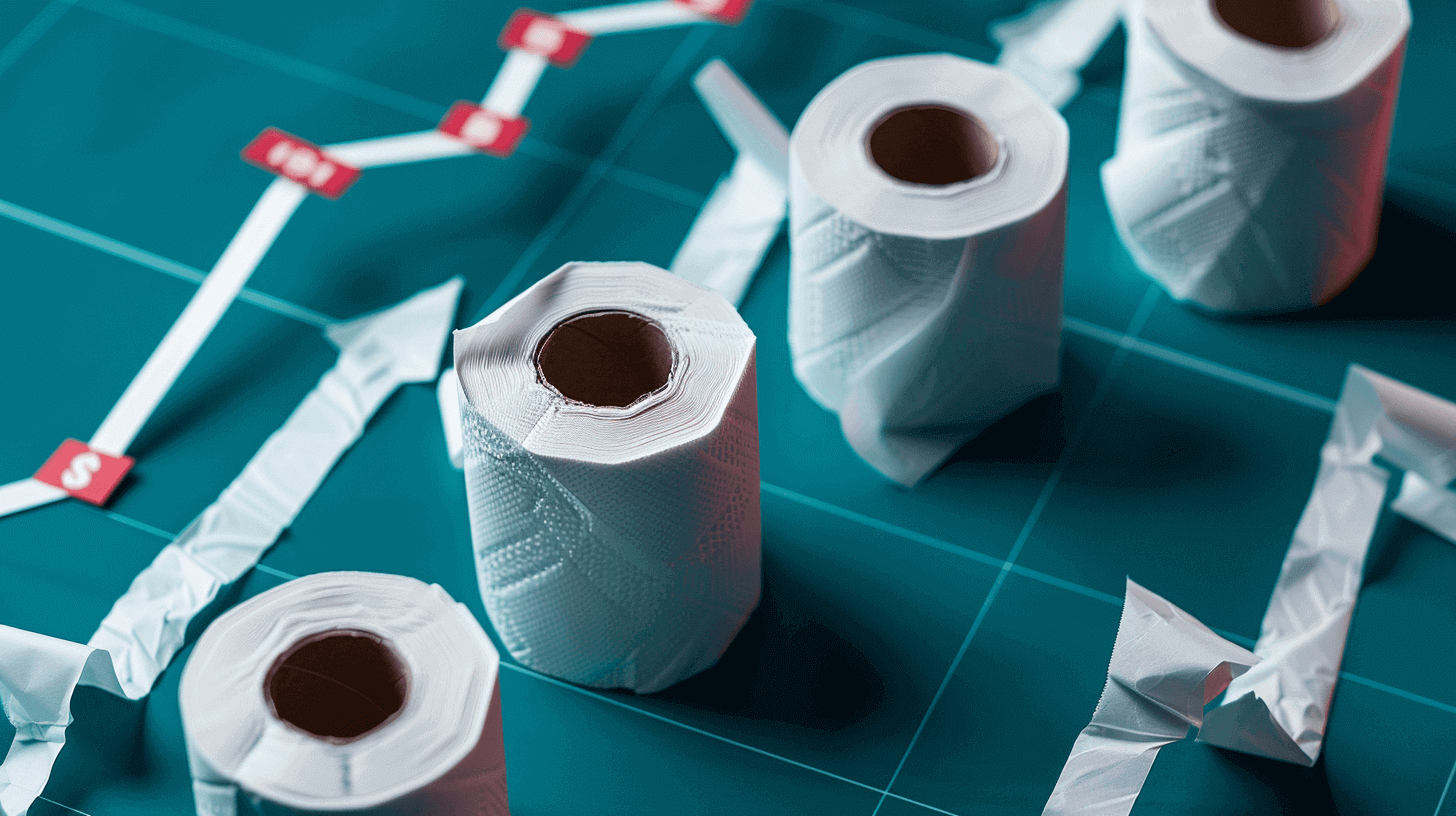Recent study says, “maybe…?”
A recent study conducted by a group of progressive economists sheds light on a sneaky phenomenon called “shrinkflation,” which has contributed significantly to the rising prices of various products in recent years.
This practice involves companies maintaining or increasing prices while reducing the size or quantity of their products. According to the study by Groundwork Collaborative, shrinkflation has played a substantial role in inflation between 2019 and 2023, accounting for up to 10% of price increases in key product categories.
For example, household paper products like toilet paper and paper towels saw 10.3% of their nearly 35% price increase attributed to shrinkflation during this period. Similarly, snacks, household cleaning products, coffee, and candy and chewing gum also experienced notable inflation due to shrinkflation.
How will this affect a pooper’s bathroom? Here are some more examples of bathroom products that could be given a corporate squeeze…
- Paper towels: Similar to toilet paper, companies may decrease the number of sheets or reduce the size of each sheet in a roll.
- Soap: Soap bars may become smaller or thinner while being sold at the same price.
- Shampoo and conditioner: Manufacturers might decrease the volume of product inside the bottle while keeping the packaging size the same.
- Toothpaste: Companies may reduce the amount of toothpaste in each tube while maintaining the same outer packaging size.
Poopable demands fair and equal pricing for toilet paper!
The Bureau of Labor Statistics (BLS) tracks shrinkflation by monitoring changes in product formulations or packaging to ensure accurate measurement of inflation. This includes scenarios where companies maintain prices but reduce the size or quantity of their products.
Groundwork’s study highlighted instances where companies implemented shrinkflation strategies to boost their profits. For example, the CEO of a major toilet paper manufacturer acknowledged on a financial call that consumers are unlikely to change their purchasing behavior even if they realize they’re paying more for less.
This reflects the perception that certain products, like toilet paper, are essential items with less price elasticity, allowing companies to implement shrinkflation tactics without significant backlash from consumers.
Shrinkflation means less rolls per package! What’s next?!
The study’s findings have prompted increased attention from policymakers and consumers alike. Sen. Bob Casey has introduced legislation aimed at combating shrinkflation, and President Joe Biden has called on companies to address this issue.
As Americans continue to grapple with higher grocery prices, understanding and addressing shrinkflation is crucial for promoting transparency and fairness in consumer markets. shrinkflation can potentially affect any product found in the bathroom, where companies seek to maintain profit margins amidst rising costs.
By shining a spotlight on deceptive pricing practices like shrinkflation, policymakers and consumers can work together to hold companies accountable and ensure that pricing reflects the true value and quantity of products.
Unfair TP pricing really grinds our gears. What do you think? TP for all? We’d love to hear your thoughts! Shoot us a note! Or drop a comment on this article or any others that flush your senses.
